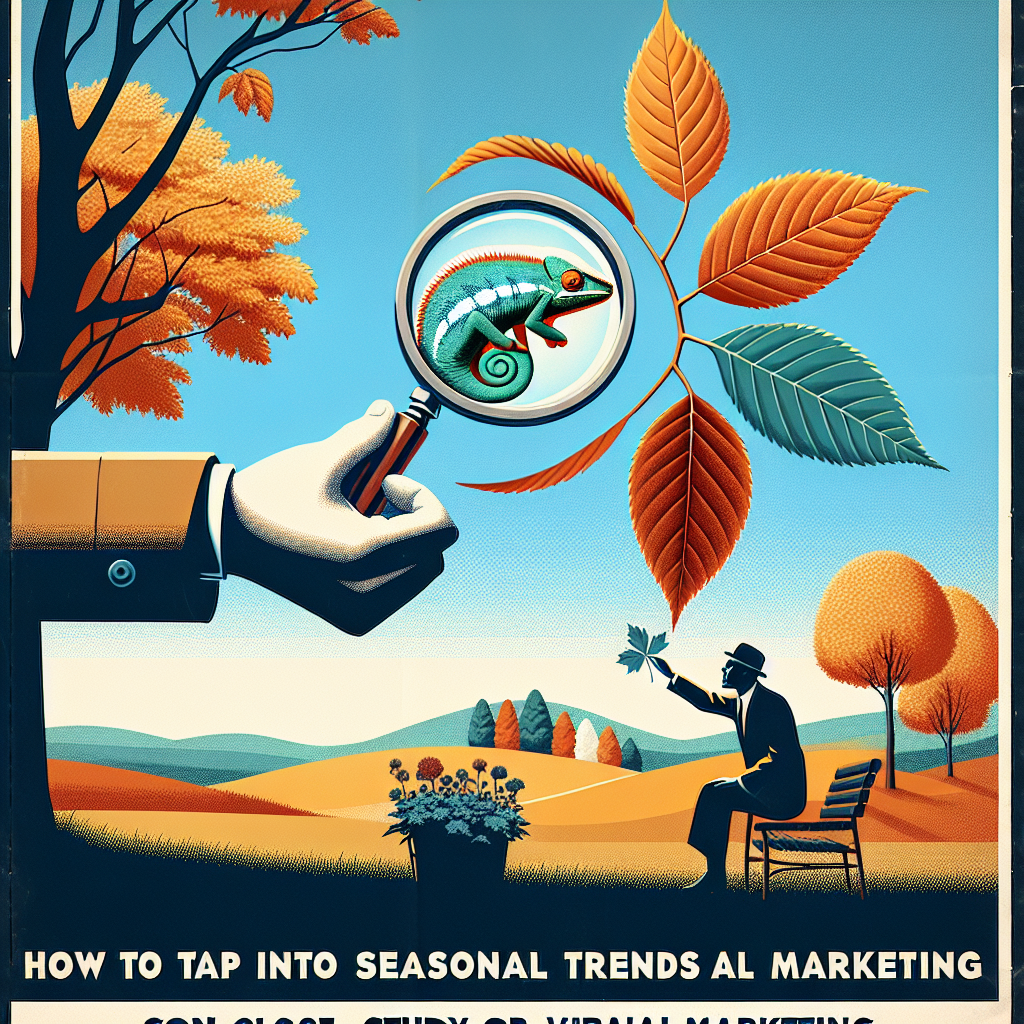Introduction to Seasonal Marketing
Seasons, holidays, and annual events deeply influence consumer behavior. Businesses that seamlessly integrate these occasions into their marketing strategies often stand out and drive more sales. Ever wonder how to craft a marketing campaign that perfectly resonates with the spirit of Christmas or summer vacation? Or perhaps, you’re curious about why certain brands’ sales skyrocket during the end-of-year holiday season?
We will explore the exciting, opportunistic world of seasonal marketing. In this article, we cover its definition, key benefits, and different types. We’ll also guide you on crafting a successful seasonal marketing strategy and tackle some challenges you might face along the way.
Additionally, we’ll examine seasonal markets and advertising, giving you a well-rounded perspective. Whether you are a marketer seeking to boost your brand’s seasonal campaign or a curious reader interested in the mechanics behind these targeted marketing efforts, this is for you.
Are you ready to learn how to tap into the power of seasons, holidays, and events? Let’s begin.
Seasonal Marketing Essentials
Defining Seasonal Marketing
Seasonal marketing is a strategic approach where businesses align their marketing efforts with specific times of the year. This can include holidays, local events, or changes in weather.
It involves adjusting product promotions, advertising, and messaging to fit the mood and behaviors of customers during these times.
Key Benefits of Seasonal Marketing
- Increased Sales: Tapping into increased consumer spending during peak times.
- Enhanced Customer Engagement: Utilizing themes and sentiments that resonate more during certain periods.
- Brand Awareness: Standing out in a crowded market when consumers are most reactive.
- Competitive Advantage: Staying relevant and ahead by responding to trends effectively.
Types of Seasonal Marketing Campaigns
Businesses can leverage various seasonal events to tailor their marketing.
| Type | Description |
|---|---|
| Holiday-Based | Celebrations like Christmas, Thanksgiving, or Valentine’s Day. |
| Weather-Based | Campaigns aligned with summer, winter, spring, or fall. |
| Event-Based | Centered around events like back-to-school or sports tournaments like the Super Bowl. |
Crafting a Successful Seasonal Marketing Strategy
1. Plan Ahead: Early preparation is essential. Start planning months in advance to maximize impact.
2. Identify Relevant Seasons: Choose seasons that align with your brand’s products or services.
3. Create a Unique Value Proposition: Differentiate your offers with unique, timely promotions.
4. Utilize Multiple Channels: Reach your audience through social media, email marketing, and in-store promotions.
5. Analyze and Optimize: After the season, analyze results to optimize future campaigns. Learn lessons from successes and failures.
Challenges in Seasonal Marketing
Although rewarding, seasonal marketing comes with challenges.
- Competition: Increased competition during peak seasons can lead to higher advertising costs.
- Short Lifespan: Some seasonal campaigns may have a brief shelf life, requiring agile adaptation.
- Inventory Management: Balancing stock levels to meet demand without excessive surplus is essential.
Resources and Further Reading
For a deeper exploration into planning effective seasonal campaigns, check out this useful guide from Forbes. It provides expert advice on making the most of seasonal marketing.
Seasonal Marketing Strategies
Anatomy of a Successful Seasonal Marketing Campaign
The success of a seasonal marketing campaign hinges on certain vital elements. These ingredients drive customer engagement, sales, and ultimately, the effectiveness of a seasonal marketing strategy:
- Theme: The theme must be relevant and engaging. It should evoke the spirit of the season and align with the product or service being promoted.
- Timing: The campaign should be timely, not only to match the season but to catch the audience when they’re most receptive.
- Targeting: Understanding the target demographic is essential for crafting a message that resonates and incites action.
- Call to Action: An enticing call to action helps turn interest into conversions.
Seasonal Marketing in the Digital Age
The advent of digital marketing has opened up new opportunities for seasonal marketing. Social media platforms, search engines, and email marketing channels are instrumental avenues for driving seasonal promotional campaigns. They enable businesses to directly reach their target audience and keep track of marketing performance through data analysis.
Smart Data Utilization in Seasonal Marketing
Data plays an integral role in creating effective seasonal marketing strategies. Marketers use data to:
- Understand the Market: Data gives insights about consumer habits and preferences. Businesses can align their offerings more effectively with market needs.
- Identify Opportunities: Through data analysis, businesses can identify seasons of maximum profitability and customer engagement.
- Evaluate Performance: Post-campaign data helps in evaluating the performance of the campaign, pinpointing where the strategy excelled and where it fell short.
Real-Life Examples of Seasonal Marketing Campaigns
Many businesses have successfully harnessed the power of seasonal marketing. Well-known examples include Starbucks’ Pumpkin Spice Latte for Fall, Coca-Cola’s personalized bottles during summer, and John Lewis’ heartwarming Christmas adverts.
Best Practices for Seasonal Marketing
While seasonal marketing has proven to be effective, it requires thoughtful execution for maximum results.
1. Do Your Research: Know what seasons or events resonate most with your audience. Learn from past trends and your competitors.
2. Think Outside the Box: Innovate and be unique. Do not duplicate your competitors’ ideas.
3. Don’t Neglect Your Brand: Ensure your seasonal campaigns uphold your brand’s image and values.
4. Recycle Campaign Ideas: A good campaign can be reused, tweaked slightly for different seasons.
5. Maximize All Marketing Channels: Utilize all available channels to push your campaigns. Diversification improves reach.
Remember, seasonal marketing can greatly contribute to your business’s growth if used correctly. However, making it work requires careful planning, innovative ideas, and robust execution. You can also refer to Nielsen for more detailed insights into seasonal sales trends globally.
Exploring Seasonal Markets
What is a Seasonal Market?
A seasonal market refers to an economic opportunity characterized by fluctuating demand and sales patterns at different times of the year. These markets primarily thrive on specific events, holidays, or weather changes that influence consumer behavior and purchasing patterns.
Example of a Seasonal Market
One classic example of a seasonal market is the holiday retail market. This market peaks during the holiday season, typically from Thanksgiving through the New Year. During this time, consumer spending increases significantly as people purchase gifts, decorations, food, and other holiday-related items. Retailers prepare for this rush by stocking up on holiday inventory, offering discounts, and ramping up their marketing efforts.
Types of Seasonal Markets
Seasonal markets can vary widely, but some common types include:
| Market Type | Example |
|---|---|
| Holiday Markets | Christmas, New Year, and Easter. |
| Weather-Dependent Markets | Winter apparel, summer swimsuits, and gardening supplies. |
| Event-Driven Markets | Back-to-school supplies and wedding season necessities. |
Impact of Seasonal Markets on Businesses
Seasonal markets can have a profound impact on businesses, influencing everything from inventory management to marketing strategies.
- Inventory Management: Businesses must anticipate demand to balance stock, avoiding excess inventory or stockouts.
- Employee Management: Seasonal markets often require additional staffing during peak times, leading to temporary hiring.
- Cash Flow: Seasonal spikes in sales can enhance cash flow, but businesses must manage finances carefully during off-peak times.
- Marketing Strategies: Companies need to tailor their marketing messages to align with seasonal trends and customer sentiments.
Examples of Successful Seasonal Market Approaches
Several businesses have leveraged seasonal markets to their advantage, creating iconic campaigns that resonate with consumers:
– Starbucks Pumpkin Spice Latte: An autumn season staple that has become synonymous with the fall season, driving sales and customer traffic to Starbucks locations.
– Retail Black Friday Sales: Retailers capitalize on the holiday shopping frenzy with significant discounts and promotions, driving one of the year’s highest sales volumes.
For more in-depth insights on how businesses can capitalize on global seasonal sales trends, you can refer to Nielsen.
Understanding Seasonal Advertising
What is Seasonal Advertising?
Seasonal advertising refers to the strategic alignment of advertising efforts with particular times of the year to better connect with certain events, holidays, or weather changes. It involves crafting targeted ad campaigns that resonate with the mood and behaviors of the consumer base during these specific times.
Characteristics of Seasonal Advertising
Seasonal advertising isn’t just about timing; it’s about understanding audience psychology and shopping behavior during certain periods.
- Timeliness: Campaigns need to be timed precisely to coincide with relevant seasons, holidays, or events. This ensures that messages reach audiences when they’re most likely to engage.
- Relevance: Ads must be suitable for the season, incorporating themes, colors, and imagery that are aligned with the time of year or specific occasion.
- Flexibility: Being able to quickly adapt messages or strategies based on emerging trends or unexpected changes in consumer behavior is essential.
Impact of Seasonal Advertising on Consumer Behavior
Seasonal advertising can significantly influence how and when consumers decide to purchase.
– Impulse Buying: Effective seasonal ads can spur impulse purchases by tapping into emotions associated with the season.
– Recall and Recognition: Seasonally themed campaigns often boost brand recall because they link the brand to specific seasons or events in consumers’ minds.
Effectiveness of Seasonal Advertising
To ensure success, businesses need to tailor their advertising strategies and measure their effectiveness.
– Personalization: Ads that are personalized to fit consumer preferences during certain seasons can enhance engagement and conversion rates.
– Different Platforms: Utilizing a mix of platforms—from social media to search engines—can help target different segments effectively.
Challenges and Considerations of Seasonal Advertising
While appealing, seasonal advertising presents unique challenges.
- Resource Allocation: Determining the budget and resources needed for peak seasons can be difficult.
- Advertising Clutter: The heightened advertising environment during peak seasons means that standing out requires more creative efforts.
- Measuring Success: Identifying relevant metrics for seasonal campaigns can be complex due to their short timeframes and unique objectives.
For more insights on seasonal sales trends and effective seasonal advertising strategies, check out this resource from Nielsen.
A Final Word on Seasonal Marketing
Seasonal marketing is a strategic tool enabling businesses to capitalize on the ebb and flow of consumer behavior as the year progresses. By aligning advertising efforts with holidays, events, or weather changes, companies can increase sales, engage customers more effectively, and stand out in a competitive market. Choosing the right seasons, creating unique promotions, utilizing multiple channels, and learning from post-season analysis are essential for crafting successful marketing campaigns.
Although the seasonal nature of such marketing strategies may put some strain on inventory management and cause intense competition, the benefits are often worth the challenges. Leveraging data to understand market trends, identify opportunities, and evaluate performance is key in today’s digital age. Learning from real-world examples and best practices can guide companies in their seasonal marketing efforts. As we adapt to the opportunities and challenges of the global marketplace, understanding and effectively using seasonal markets and advertising remains an essential skill in the marketer’s toolkit.
Frequently Asked Questions – FAQs
What is seasonal marketing?
Seasonal marketing is a strategic approach where businesses align their marketing efforts with specific times of the year, such as holidays, local events, or changes in weather.
What are the benefits of seasonal marketing?
Benefits include increased sales during peak times, enhanced customer engagement through resonating themes, brand awareness, and gaining a competitive advantage.
What are the different types of seasonal marketing campaigns?
Companies can tap into holidays, weather changes, and events such as back-to-school season or sports tournaments for their seasonal marketing campaigns.
What are some challenges in seasonal marketing?
Increased competition during peak seasons can lead to higher advertising costs, campaigns may have a short lifespan requiring agility, and managing inventory levels to meet demand without excessive surplus can be challenging.
What is the role of data in seasonal marketing?
Data gives insights about consumer habits and preferences, helps identify profitable seasons and aspects of customer engagement, and assists in evaluating the performance of campaigns.






